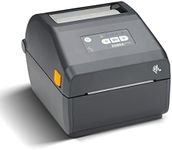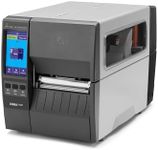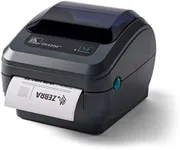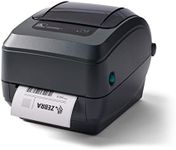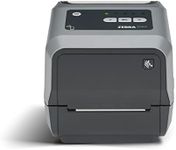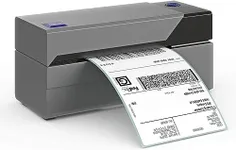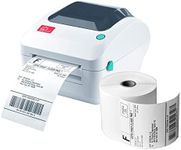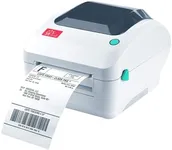Buying Guide for the Best Thermal Transfer Printer
Choosing the right thermal transfer printer can be a bit overwhelming, but understanding the key specifications can help you make an informed decision. Thermal transfer printers are widely used for printing durable labels, barcodes, and tags. They work by transferring ink from a ribbon onto the printing surface, which makes them ideal for applications where the print needs to withstand harsh conditions. Here are the key specifications you should consider when selecting a thermal transfer printer and how to navigate them to find the best fit for your needs.Print ResolutionPrint resolution is measured in dots per inch (DPI) and determines the clarity and detail of the printed output. Higher DPI values produce sharper and more detailed prints. Common resolutions are 203 DPI, 300 DPI, and 600 DPI. For general labeling and barcodes, 203 DPI is usually sufficient. If you need to print small text or detailed graphics, consider a 300 DPI printer. For the highest quality prints, such as for intricate designs or very small labels, a 600 DPI printer is ideal.
Print SpeedPrint speed is measured in inches per second (IPS) and indicates how quickly the printer can produce labels. Faster print speeds are beneficial for high-volume printing environments. Typical print speeds range from 2 IPS to 12 IPS. If you need to print large batches of labels quickly, look for a printer with a higher IPS. For lower volume or occasional printing, a slower speed may be sufficient and more cost-effective.
Print WidthPrint width refers to the maximum width of the label that the printer can handle. This is important if you need to print wide labels or tags. Common print widths range from 2 inches to 8 inches. Choose a printer with a print width that matches the size of the labels you plan to use. For standard shipping labels, a 4-inch print width is typically adequate. For larger labels, such as those used in manufacturing or warehousing, a wider print width may be necessary.
Connectivity OptionsConnectivity options determine how the printer can be connected to your computer or network. Common options include USB, Ethernet, Wi-Fi, and Bluetooth. USB is suitable for direct connections to a single computer. Ethernet is ideal for networked environments where multiple users need access to the printer. Wi-Fi and Bluetooth offer wireless connectivity, providing flexibility in printer placement and ease of use with mobile devices. Choose the connectivity option that best fits your workflow and environment.
Durability and Build QualityDurability and build quality are important if the printer will be used in harsh or industrial environments. Look for printers with robust construction and materials that can withstand dust, moisture, and physical impacts. Industrial-grade printers are designed for heavy-duty use and can handle high volumes of printing without frequent maintenance. For office or light-duty use, a desktop printer with a sturdy build may be sufficient.
Ribbon and Media CompatibilityRibbon and media compatibility refers to the types of ribbons and labels the printer can use. Different applications may require specific types of ribbons, such as wax, resin, or wax-resin blends, each offering different levels of durability and print quality. Ensure the printer you choose is compatible with the ribbons and media you need for your specific application. For example, resin ribbons are ideal for printing on synthetic labels that need to withstand harsh conditions, while wax ribbons are suitable for general-purpose labeling on paper.


